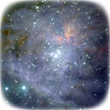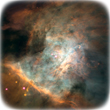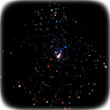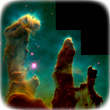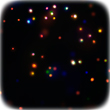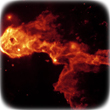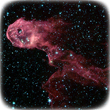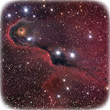The Case of the Massive Forming Star
How do Massive Stars form?

Kathryn M. Bombardieri
Ms. Bombardieri, animator, graduated with honors in Fine Arts from Saint Anselm College. At home, she and her brothers never had fewer than five video game consoles, and Kate was one of the few girl gamers that she knew growing up. In college, she discovered her passion for actually building games and animations, and she received additional training in animation at Rhode Island School of Design and at Boston University's Center for Digital Imaging Arts, where she holds a certificate in 3-D animation.

Claire Chandler
Dr. Chandler is the Deputy Assistant Director for Science, New Mexico Operations, at the National Astronomy Observatory. She obtained her Ph.D. from the University of Edinburgh in 1991 and held various postdoctoral positions at Caltech, NRAO, and the University of Cambridge before joining the NRAO scientific staff in 2000. Claire chose to study "astrophysics" in college because it sounded more interesting than plain "physics," and luckily it has turned into a lifelong passion. However, she was never an amateur astronomer and she still has trouble identifying constellations.

Ciriaco Goddi
Dr. Goddi was born in Sardinia (Italy), where he did his undergraduate studies in physics and received his Ph.D. in astrophysics in 2005 at the University of Cagliari. He has been working as a postdoctoral fellow at the Harvard-Smithsonian Center for Astrophysics in Cambridge (MA) since September 2006.
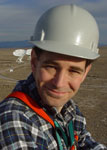
Lincoln Greenhill
Dr. Greenhill is a Senior Research Fellow at Harvard University in the Faculty of Arts and Sciences, Lecturer in the Department of Astronomy, and Radio Astronomer at the Smithsonian Astrophysical Observatory. He is also a member of the Harvard University Initiative for Innovative Computing and Project Scientist for the Murchison Wide-field Arrary radio telescope.

Alex Griswold
Mr. Griswold is Executive Producer in the Science Education Department at the Harvard-Smithsonian Center for Astrophysics (CfA). His interest in astronomy dates back to a home-made telescope he built when he was 11 years old. Before joining the CfA in 1992, Griswold taught video and film production and worked as an independent producer; his programs aired nationally on public television. At CfA, he leads the production of courses and websites aimed at science teachers and the general public.

Michelle Hardy
Ms. Hardy is currently a web specialist at the Harvard-Smithsonian Center for Astrophysics (CfA). Prior to her current position she worked as a project coordinator for the Annenberg Channel at the CfA. She holds a masters degree from the University of Massachusetts in Critical and Creative Thinking (2006) and her undergraduate studies were focused on the life sciences. Before coming to the CfA, she worked in biotechnology and greenhouse production.
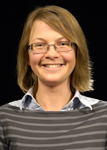
Liz Humphreys
Dr. Humphreys obtained her Ph.D. from the University of Bristol, UK in 1999. She held postdoctoral positions at Onsala Space Observatory, Sweden, and at the Harvard-Smithsonian Center for Astrophysics (CfA) before becoming a temporary staff Radio Astonomer at CfA in 2006.

Lynn Matthews
Dr. Matthews was born and raised in Green Bay, Wisconsin. She received her bachelors degree in astronomy-physics from the University of Wisconsin-Madison in 1991, and a Ph.D. in astronomy from the State University of New York at Stony Brook in 1998. Currently she is a postdoctoral associate at MIT Haystack Observatory and studies a wide variety of objects—ranging from stars to galaxies—using radio astronomy techniques. She has held prior positions as a Jansky Fellow at the National Radio Astronomy Observatory and as both a Clay Fellow and a Visiting Scientist at the Harvard-Smithsonian Center for Astrophysics.
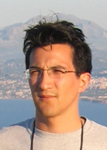
Jonathan C. Tan
Dr. Tan is an associate professor in the Department of Astronomy at the University of Florida. His research is focused on the origin of stellar systems, including massive stars, ranging from the first stars and galaxies to local star clusters, such as the Orion Nebula. He is also interested in the physics of the interstellar medium, accretion disks, supernovae, gamma-ray bursts, and active galactic nuclei. Jonathan Tan's Website
